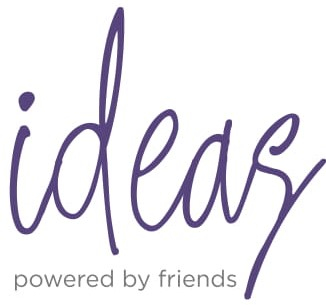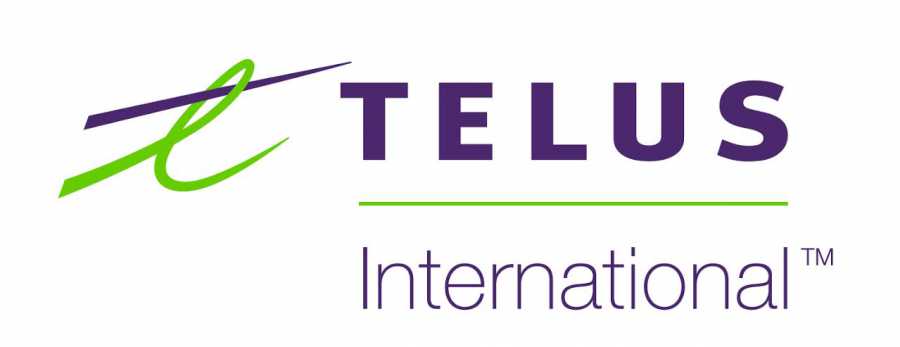
ARTON PROGRAM - The therapeutic power of the group
Creative projects involving group work - general musical performance or group painting, collage, sculpture - are useful in helping to explore and strengthen social...
Feelings of anxiety and stress can be so unpleasant that they disrupt our daily life. We may struggle to focus, sleep, or work, and we might even hurt the people around us.
Fortunately, there are methods we can use to curb anxiety. This post outlines some key relaxation techniques that you can use with your clients or on yourself to reduce anxiety and stress. Most of these techniques are practical, although other cognitive methods are also mentioned.
If you do feel overwhelmed with stress and are struggling to cope, consider consulting an expert who can help you. This post is not meant to replace the invaluable guidance and expertise that a clinical psychologist has but is an additional tool for combating anxiety.
With that said, get a steaming mug of tea, make yourself comfortable, and let’s begin.
First, we thought you might like to download our three Mindfulness Exercises for free. These science-based, comprehensive exercises will not only help you cultivate a sense of inner peace throughout your daily life, but will also give you the tools to enhance the mindfulness of your clients, students, or employees.
Significant progress has been made toward the nonpharmacological treatment of anxiety. Nonpharmacological treatments include any treatments that are not medications or drugs; examples include relaxation techniques, types of therapies, and even exercise.
Effect of relaxation techniques on anxiety
Manzoni, Pagnini, Castelnuovo, and Molinari (2008) published a meta-analysis looking at the efficacy of different relaxation techniques at reducing anxiety. Typically, relaxation techniques are used to thwart how we feel and think when we find ourselves in an anxiety-inducing situation.
The meta-analysis included the following techniques:
Overall, the authors found that relaxation techniques were effective in reducing feelings of anxiety. This positive effect was found in studies that included a control group as a comparison (i.e., a between-subjects design) and studies where participants were compared to their own baseline of anxiety before using the technique (i.e., a within-subject design).
The efficacy ranking of the different techniques differed depending on the type of study design; however, the authors tentatively recommend that meditation, applied relaxation, and progressive relaxation are the best strategies to adopt. These strategies are described later in this post.
These results have been confirmed in other meta-analyses. Specifically, meditation has a positive effect of reducing anxiety in patients with cardiovascular illness (Ospina et al., 2007) and cancer (Bränström, Kvillemo, Brandberg, & Moskowitz, 2010; Elkins, Fisher, & Johnson, 2010).
Effect of mindfulness and acceptance-based interventions
In a more recent meta-analysis, Vøllestad, Nielsen, and Nielsen (2012) compared the outcomes of mindfulness and acceptance-based interventions on anxiety disorders. Mindfulness and acceptance-based interventions include:
Acceptance-based interventions include Acceptance and Commitment Therapy, Acceptance-Based Behavior Therapy, and Mindfulness-Based Cognitive Therapy. Vøllestad et al. (2012) provide a summary of these therapies.
Overall, the results indicated that these treatments led to a reduction in anxiety symptoms and depression. Furthermore, these therapies also improved quality of life scores, suggesting that these therapies do more than just reduce anxiety symptoms.
Effect of Mindfulness-Based Stress Reduction (MBSR) on anxiety
A mindfulness-based relaxation technique often researched is Mindfulness-Based Stress Reduction (MBSR; Kabat-Zinn, 1990).
The original concept of MSBR consisted of a mix of meditation, yoga, body scan, and lectures about mindfulness that spanned eight weeks. Program participants are encouraged to practice this intervention for 45 minutes each day for six days per week to achieve the maximum benefit.
Initially, MBSR was designed to assist clinical patients, but it is often used with nonclinical populations too (e.g., Khoury, Sharma, Rush, & Fournier, 2015).
Meta-analyses have consistently shown that MSBR techniques lead to positive outcomes by reducing stress and anxiety, as well as physiological measures such as blood pressure (Khoury et al., 2015), although long-term effects are unknown (De Vibe, Bjørndal, Tipton, Hammerstrøm, & Kowalski, 2012).
Physical activity and exercise
There is also evidence that physical activity, such as exercise, can reduce symptoms of anxiety.
Jayakody, Gunadasa, and Hosker (2014) report that exercise does reduce symptoms of anxiety but is most effective when combined with antidepressant medication, meditation therapy, and/or lifestyle changes.
Subsequent studies have also found a positive effect of exercise on anxiety in nonclinical populations (Rebar et al., 2015); however, the relationship between exercise and anxiety reported by clinical populations is less clear (see discussion in Rebar et al., 2015).
Here is a list of ways to help deal with stress.
Boundaries
One of the first steps toward coping with stress and anxiety is to put yourself first. You need to get enough sleep, eat healthily, do exercise, take time to recharge, have uninterrupted time to work, and have time to socialize. Without boundaries, you won’t be able to implement any of the other treatments.
To be able to do all of these things, you need to have boundaries. If you do not have enough time available to take on another task, learn to say ‘No’ or delegate the task to someone else.
You must make time for yourself to do things that you like. Ensure you are in bed at a certain time so that you can get enough sleep. Without boundaries, you won’t have the space to do the necessary muscle relaxation techniques described below or take a ‘breather’ when you’ve had a difficult work week.
Learn to recognize signs of anxiety
The next step is to identify how anxiety and stress manifest in your life. For example, some people have trouble sleeping when they are stressed out, whereas others might feel irritable.
Monitoring these symptoms is difficult because you need to be aware of what to look for. However, developing this awareness is very useful because it can help you implement supportive strategies before your anxiety becomes overwhelming and destructive.
Here are some ways to monitor signs of anxiety:
When you know how your anxiety manifests, then you can take steps to tackle these symptoms. For example, if you struggle to focus, then you can consider meditation techniques. If you feel tense, then consider muscle relaxation techniques.
Muscle relaxation techniques
Muscle relaxation techniques can be very useful at reducing anxiety. When feeling anxious, do the following exercise:
To be effective, these techniques should be practiced often, even in times when you are not feeling stress.
Mindfulness techniques
Techniques aimed at developing mindfulness are very effective at treating anxiety and stress (Kushner & Marnocha, 2008).
Some examples of these techniques include:
In each of these techniques, you will learn how to turn your attention inward, calm your mind by reducing the effect of distracting thoughts, and consequently direct your thoughts constructively.
Some mindfulness techniques require more time than others. For example, a body scan typically only takes three minutes, whereas yoga can last between 20 and 90 minutes. Consequently, some of these techniques are more easily implemented in different contexts. For example, body scans and relaxation exercises can be used at work or in any quiet place, like a parked car. Yoga, however, needs more physical space.
Mindfulness techniques are difficult to master and require regular exercise; knowing this, it’s important not to feel disheartened if it feels impossible. Make sure to prioritize time and space for regular practice. The effects are not immediate, but it will get easier with practice.
Meditation
Meditation refers to an exercise where you practice awareness to clear your mind of distracting thoughts and feelings (Kushner & Marnocha, 2008). There are different types of meditation, but they share the primary goal of increasing mindfulness and helping patients control their thoughts, guiding or directing them in a useful way.
Mindfulness can be developed through meditation, but also through exercises like mindful walking, mindful drawing, and mindful journaling.
Progressive relaxation
Progressive relaxation was first described by Edmund Jacobson in 1924. The premise is that the patient learns to tense and relax specific muscle groups one at a time until maximum relaxation is achieved.
Together with the therapist, the patient learns how to identify, tense, and relax a tense muscle/muscle group.
Armed with this knowledge, the patient can identify when they are feeling tense and learn how to relax muscles that contribute to this sensation. The full technique is described by Jacobson (1924, 1925), or you can read our guide on Progressive Muscle Relaxation.
Applied relaxation
Applied relaxation stems from the understanding that anxiety develops from the interaction of multiple systems (Hayes-Skelton, Roemer, Orsillo, & Borkovec, 2013; Öst, 1987). For example, if you start to feel anxious and develop physical symptoms like increased heart palpitations, then your cognitive system is also activated.
Once you become aware of how you are feeling, this makes you feel anxious. The full technique is outlined in Öst (1987).
With applied relaxation, the patient uses the techniques of progressive relaxation but in an applied setting. First, the patient has to learn how symptoms of anxiety manifest for them. Then if the patient recognizes their symptoms of anxiety, they can use the relaxation techniques to deactivate the spread of the anxiety from one system to the other.
Translation, professional adaptation and re-posted from https://positivepsychology.com/

Creative projects involving group work - general musical performance or group painting, collage, sculpture - are useful in helping to explore and strengthen social...

In the ARTON Program our team of oncopsychologists, art therapists and music therapists develops the process of children's creativity as a process of...

In ARTON sessions, creating a piece of music or a song is an emotional experience of coping and satisfaction for the participating children. They make friends with...

Painting provides patients with a spontaneous, plastic method of depicting thoughts and experiences. Painting with paints is not as structured as with pencil or...










